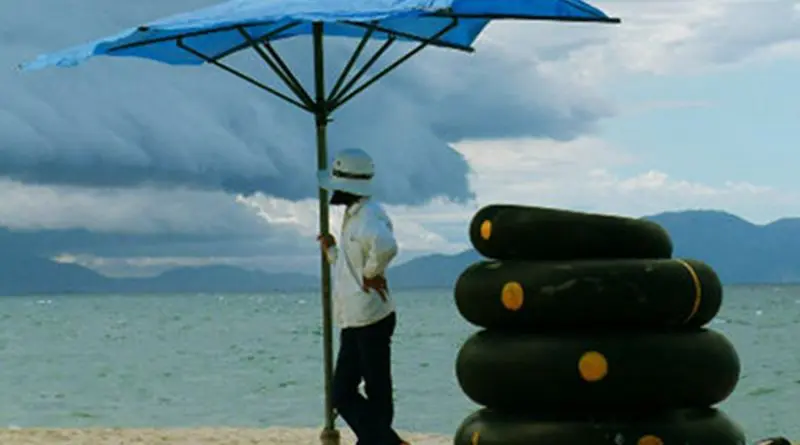Scaling Up India-Vietnam Ties – Analysis
Vice President of India M. Venkaiah Naidu paid a 4-day official visit to Vietnam from 9 to 12 May, which aimed at enhancing India’s comprehensive strategic partnership with Vietnam. It is common knowledge that India-Vietnam partnership has stood the test of time.
Besides interactions with top political leaders of Vietnam, Naidu took time to address the Indian community at an event and hailed the relationship between the two countries. Among his engagements, Naidu held meetings with his Vietnamese counterpart Dang Thi Ngoc Thinh, Prime Minister Nguyen Xuan Phuc and Chairwoman of National Assembly of Vietnam Nguyen Thi Kim Ngan. Naidu delivered the keynote address at the 16th United Nations Day of Vesak Celebration at Tam Chuc Pagoda in Vietnam’s Ha Nam Province. The event was themed as “Buddhist Approach to Global Leadership and Shared Responsibilities for Sustainable Societies”.
While interacting with the Chairwoman of National Assembly of Vietnam Nguyen Thi Kim Ngan, Naidu stressed the importance of regular exchanges of visits between Parliamentarians via India-Vietnam Parliamentary Group to promote better understanding and strengthening legislative cooperation between the two nations.
In order to deepen the human relationship and reflecting the historical bond that exists between the two countries, an event under the ‘India for Humanity’ initiative launched to commemorate the 150th birth anniversary of Mahatma Gandhi was organized in Vietnam wherein Naidu met the Vietnamese beneficiaries of the Jaipur Foot Artificial Limb Fitment Camp. The organization of such events is a reflection of the fact that India-Vietnam relations built on a firm foundation of close cultural, historical and civilizational links and are marked by mutual trust and understanding as well as strong cooperation in regional and international fora.
Regular exchange of visits by top political leaders from either country led bilateral ties to be elevated to a Comprehensive Strategic Partnership during Prime Minister Narendra Modi’s 2016 visit to Vietnam. Naidu’s visit followed a series of high-level exchanges in 2018 including the visits of Prime Minister in January 2018 and President in March 2018 of Vietnam to India. These exchanges have resulted in robust cooperation in several areas, expanded defence and security ties, forged new economic and commercial linkages and deepened people-to-people engagement. The two sides share a common desire to promote peace, security and prosperity in the Indo-Pacific region.
Of the approximate 30 million Indians settled in over 70 countries, the number of Indians settled in Vietnam may look small but their role as India’s cultural ambassadors is of immense value. As of 2011, their number totaled about 2,000, mainly in Ho Chi Minh City. This number has risen to about 2,900. Prior to the Vietnam War, there was a vibrant Indian community consisting of primarily Tamils, and especially the Chettiars.
Reaching out to Indians overseas has emerged as an important instrument of India’s foreign policy. Top political leaders visiting foreign countries officially have often interacted with the Indian diaspora, which is why while addressing Indian Community and Friends of India in Hanoi, Naidu stressed Indian government’s priority has been to reach out to the Indian community overseas. Naidu appealed to the Indian diaspora in Vietnam to cherish their roots and carry the message of India to the world. This historic relationship has been built and nurtured premised on trust and goodwill by successive generation of leaders.
While having wide-ranging talks with his counterpart Dang Thi Ngoc Thinh to enhance bilateral and multilateral cooperation, Naidu reiterated the importance of building a peaceful and prosperous Indo-Pacific region based on respect for national sovereignty and international law. The strong bilateral relationship between the two countries is based on mutual trust, understanding, convergence of views on regional and international issues. Affirming their stand a day after the Indian Navy participated with the navies of the US, the Philippines and Japan in their first joint naval exercise in the disputed South China Sea, where China is flexing its military muscle was therefore significant.
Indeed, Vietnam is a strategic pillar of India’s Act East Policy and India’s key interlocutor in ASEAN and therefore both the countries desire that the concerned countries are able to reach consensus on a Code of Conduct in South China Sea. As highlighted by Prime Minister in June 2018 in his speech at the Sangri La Dialogue, India remains committed to the principle of an open, transparent, inclusive and rules-based regional architecture based on freedom of navigation and overflight, unimpeded economic activities and peaceful settlement of disputes in accordance with the international law.
The Indo-Pacific is a bio-geographic region, comprising the Indian Ocean and the Western and Central Pacific Ocean, including the South China Sea. The US has conducted a series of “freedom of navigation” exercises in the disputed South China Sea, triggering protests from Beijing over what it says is infringement of sovereignty. While China claims this oceanic space almost in its entirety, Brunei, Malaysia, the Philippines, Vietnam and Taiwan also have contending claims on areas falling in their exclusive economic zones.
At the bilateral level, ties have assumed robustness in many areas making the relationship multifaceted. Both the countries are strengthening cooperation in defence and security, peaceful uses of atomic energy and outer space, science and technology, oil and gas, renewable energy, infrastructure development, agriculture and innovation-based sectors.
In the field of economy, bilateral trade stands at present at $14 billion. It doubled from $7.8 billion three years ago. Both have put a target to reach at $15 billion by 2020. Given the past trend, it seems to be achievable.
Connectivity has remained an issue for quite some time. At the moment, there is no direct flight between New Delhi and Hanoi. Research done by potential airlines led to the finding that it was not commercially viable. However, direct air connectivity between the two capitals could be a possibility with the Indian carrier Indigo deciding to start direct flight between the two capitals later in 2019. When materialized, both would have crossed another frontier as this would further boost trade and tourism exchanges.

